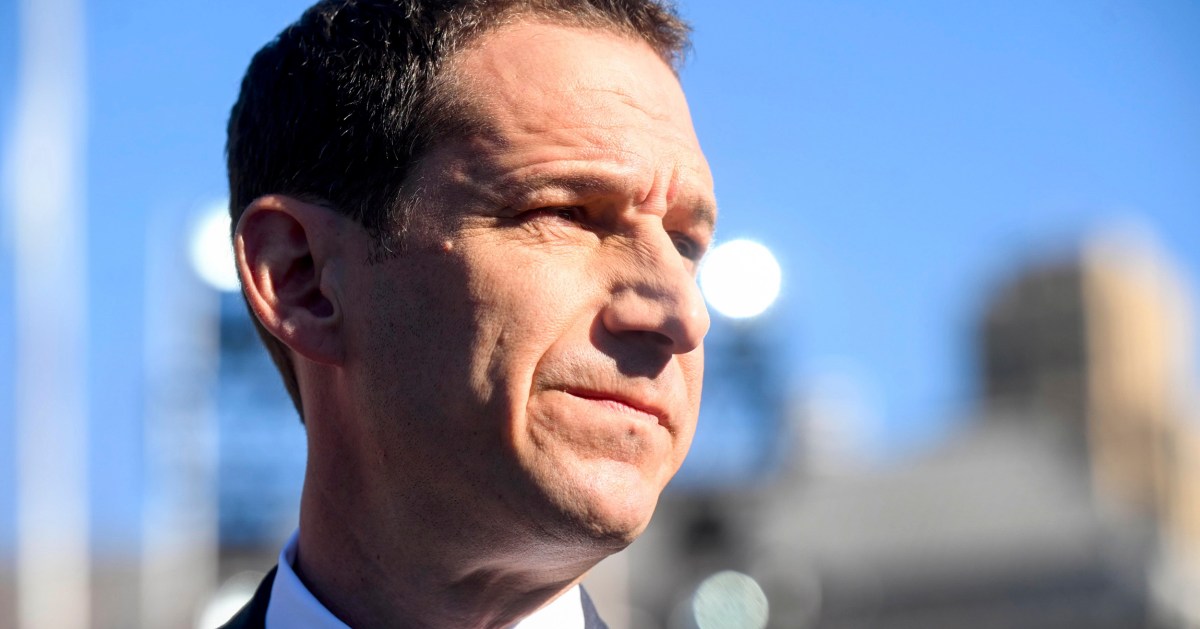“A pivotal part of any self-governance dialogue has to include reconciling the illegal overthrow of the Hawaiian Kingdom in 1893.”
Editor’s note: For Hawaii’s Nov. 8 General Election, Civil Beat asked candidates to answer some questions about where they stand on various issues and what their priorities will be if elected.
The following came from Peter Apo, candidate for Office of Hawaiian Affairs at-large trustee. The other candidates include Keli’i Akina, Lei Ahu Isa, Leona Kalima, Larry Kawaauhau, Brendon Kalei’aina Lee and Patty Kahanamoku-Teruya.
Go to Civil Beat’s Election Guide for general information, and check out other candidates on the General Election Ballot.
1. What do you see as the most pressing problem facing Native Hawaiians, and what will you do about it?
OHA has an obligation to address the underlying purpose of the constitutional amendment that created OHA to serve as a center of gravity in framing a statewide discussion among Hawaiians and their institutions on how to pursue “Ea,” defined here as self-determination.
For many Hawaiians, self-determination translates to self-governance. Unexplained is why OHA apparently abandoned “Ea” as a major policy objective sometime after 2020. This flies in the face of why OHA was created in the first place. A pivotal part of any self-governance dialogue has to include reconciling the illegal overthrow of the Hawaiian Kingdom in 1893 which led to the annexation of Hawaii to the United States.
In the decades-long struggle to establish itself as a unified native community, OHA’s plight begs extraordinary and visionary leadership. It should be noted that the shaping of a unified Hawaiian future cannot come at the expense of the rest of Hawaii society. Whatever the model, it must, in many respects, unify all Hawaii.
2. Should OHA be subject to oversight by the Hawaii State Ethics Commission?
Yes.
3. Do you support the construction of the TMT atop Mauna Kea? Why or why not? Could the new management structure help to resolve long-standing disputes?
Yes, I support the TMT, which is no longer proposed “atop Mauna Kea.” It was moved to a lower slope absent any sacred sites to avoid the cultural complaint that “any intrusion in the airspace above the summit is a cultural injury.”
There has been no validating body of authority to rule on such a cultural claim since the demise of the Hawaiian “priesthood” after the Battle of Kuamo’o in 1819. A second claim is any digging into the mountain is a cultural injury. How can that be when Hawaiians for centuries maintained a deep rock quarry to mine the best stone for tools and weapons?
Mauna Kea erupted into a network of issues. A complex of 13 telescopes by UH with no end in sight. Hawaiians are merging the TMT issue with the unreconciled overthrow of the Hawaiian Kingdom in 1893.
I support the TMT because studying the universe of stars is a sacred Hawaiian cultural practice supported by the chant history and archaeological research. Hawaiian star gazers sat on mountain tops for centuries observing star patterns. The new management structure has a great opportunity to create a body politic or system of reviewing claims and ruling on their legitimacy.
4. What role should the Department of Hawaiian Home Lands play in reducing homelessness?
The question puzzles me. The DHHL already has thousands on their waiting list, many of whom have died after years of waiting. It would seem insane to add the thousands of homeless to the list.
The Homestead Act, for Hawaiians only, framed by the Congress with the state assuming responsibility, would have to be amended to add a second beneficiary group of the homeless.
5. Why do you think Hawaiians are disproportionately represented in our prisons and jails? What can be done about it?
This is not an easy question to answer. One-hundred thirty years of transgenerational trauma. Since the overthrow of 1893, the Republic of Hawaii, and then annexation, Hawaiians have been deeply imbedded and struggling with the transgenerational trauma of losing their homelands, their culture, their religion, their language, their pride and dignity — and — two-thirds of their population to Western diseases for which they had no immunity. The entire society collapsed.
I would reframe your question to include the homelessness question, education, family income and so forth. I don’t have a lot of data but I think I’m safe in saying a significant percentage of the Hawaiian population dominates many of the negative quality of life statistics such as housing, income, education and so forth.
Perhaps the expanded question needs to be added to the first question about what is OHA’s most pressing problem?
6. What are your views regarding Hawaiian self-determination?
Answered in question No. 1.
7. Is OHA getting its fair share of ceded-land revenues from the state?
Yes and no. It’s up to each state department that manages trust lands to individually determine how to calculate the 20% of leased lands they manage which they must share with OHA.
The Department of Transportation apparently is the most honest model in its calculations. Most other departments do not fully comply with a full measure of the 20% mandate. I’m guessing that OHA is short-changed by about half of what it is entitled.
8. Is OHA fulfilling its mandate to serve the Hawaiian people?
OHA is struggling to fully understand its mandate.
9. Is Hawaii managing its tourism industry properly? What should be handled differently?
Hawaii’s tourism model is predatory and wallet-driven where visitors are kept separated from the visited (locals) by a wall of commerce centered around airlines, hotels, travel desks and offshore marketing.
A vast majority of tourists have their Hawaii vacation fully booked before they even leave their hometown. Growth is largely driven by global corporate brands and almost entirely built on a marketing framework.
County governments, particulary Oahu and Maui, seem to support the proliferation of hotel and visitor shopping center complexes with little thought or dialogue about carrying capacity of an island or any part of an island. The proliferation of the bed and breakfast business model made every residential community in Hawaii susceptible to strangers constantly moving in and out of neighborhoods.
While I sound anti-tourism, I am not. I support tourism as do many fellow Hawaiians. What we don’t support is the predatory business model. This model creates a bimodal distribution of wealth. Rich and poor, no in-between.
The industry was built on Hawaiians and their aloha. OHA needs to give serious thought to engaging the industry through investment and developing a Hawaiian-based tourism model with a cultural framework to guide the business model.
10. How would you make OHA more transparent and accessible to the public and the Hawaiian people?
OHA should consider shifting its governance model away from a trust fund framework to a legislative framework and revisit the Kanaioluwalu attempt to establish a Hawaiians-only registration process (no state money involved) which can function as a voter registration initiative.
A trust fund governance model and operating culture functions more like a parent-child relationship. The trustees are the parents and the children are defined as “beneficiaries.” The trust fund model separates the parents from the children by a well-defined line of demarcation where the children have little to say about how they are being governed even though trustees are directly elected and not appointed.
The idea of revamping the model to replicate a legislative framework would elevate the Hawaiian beneficiaries to the status of being considered “citizens” in a democratic framework. The legislative model affords the “citizens” a more direct say on how they are being governed.
This governance shift would dramatically implant a long-term objective for OHA to transition into a self-governing legislative body, perhaps increasing the number of trustees? This model would still operate under the legal umbrella of statehood, but create an expectation and sense of Hawaiian nationhood.
Sign up for our FREE morning newsletter and face each day more informed.



























